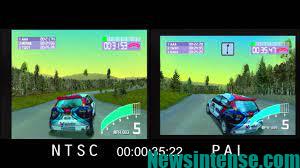What is NTSC?
NTSC is the analog TV color system used in North America, Central America, and parts of South America.
What is PAL?
PAL is an analog TV color system used in Europe, Australia, parts of Asia, parts of Africa and parts of South America.
The systems are very similar to each other, the main difference is the electricity consumption. In North America, electrical power is produced at 60 Hz. On other continents, the standard is 50 Hz.

The refresh rate of an analog TV is directly proportional to its power consumption. Analog TVs use a cathode ray tube (CRT) to beam light to the back of the screen. These tubes are not like projectors, they cannot fill the screen in one go. Instead, they beam light quickly across the top of the screen. The picture at the top of the screen begins to flash with the light at the bottom of the CRT screen.
Analogue TVs combine an image. That is, they skip every other line on the screen to get an image that looks consistent to the human eye. As a result of this jump, 60 Hz NTSC TV is broadcast at 29.97 FPS, and 50 Hz PAL TV is broadcast at 25 FPS. Frame rate aside, PAL is technically superior to NTSC.
Are NTSC and PAL Still Important?
Malfunctions or features in NTSC and PAL mainly determine how analog TVs work. Digital TVs today are fully capable of circumventing these limitations, but there are still NTSC and PAL in use. If you are sending video information via an analog cable (RCA, coaxial, SCART, s-video), modern TVs need both NTSC and PAL formats to be able to decode this information.


